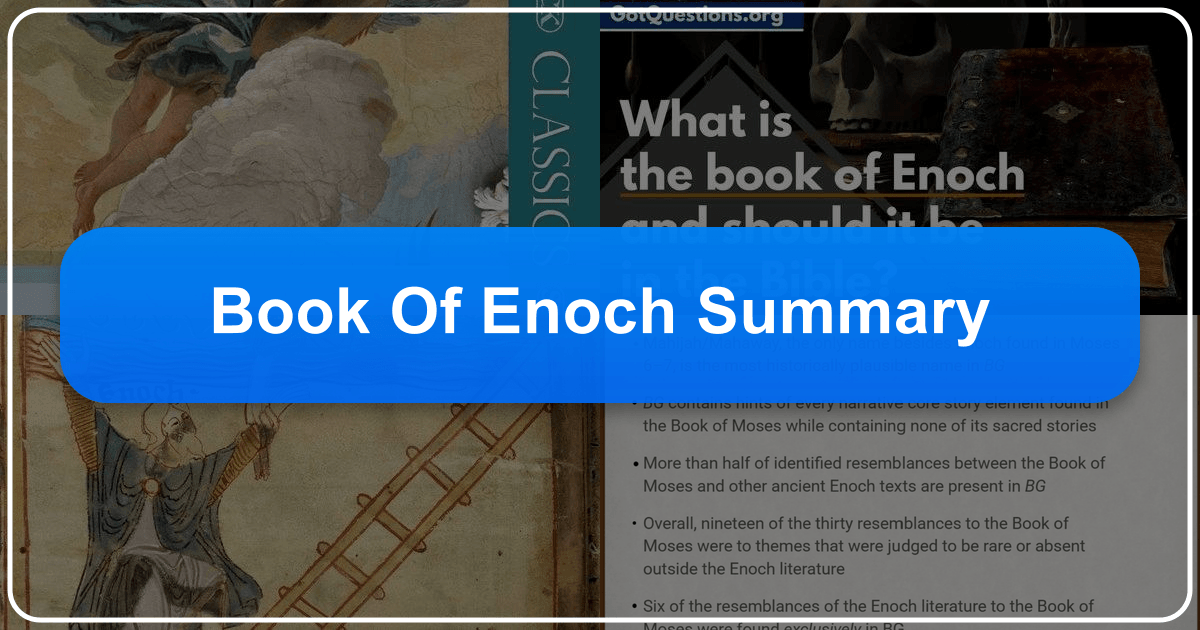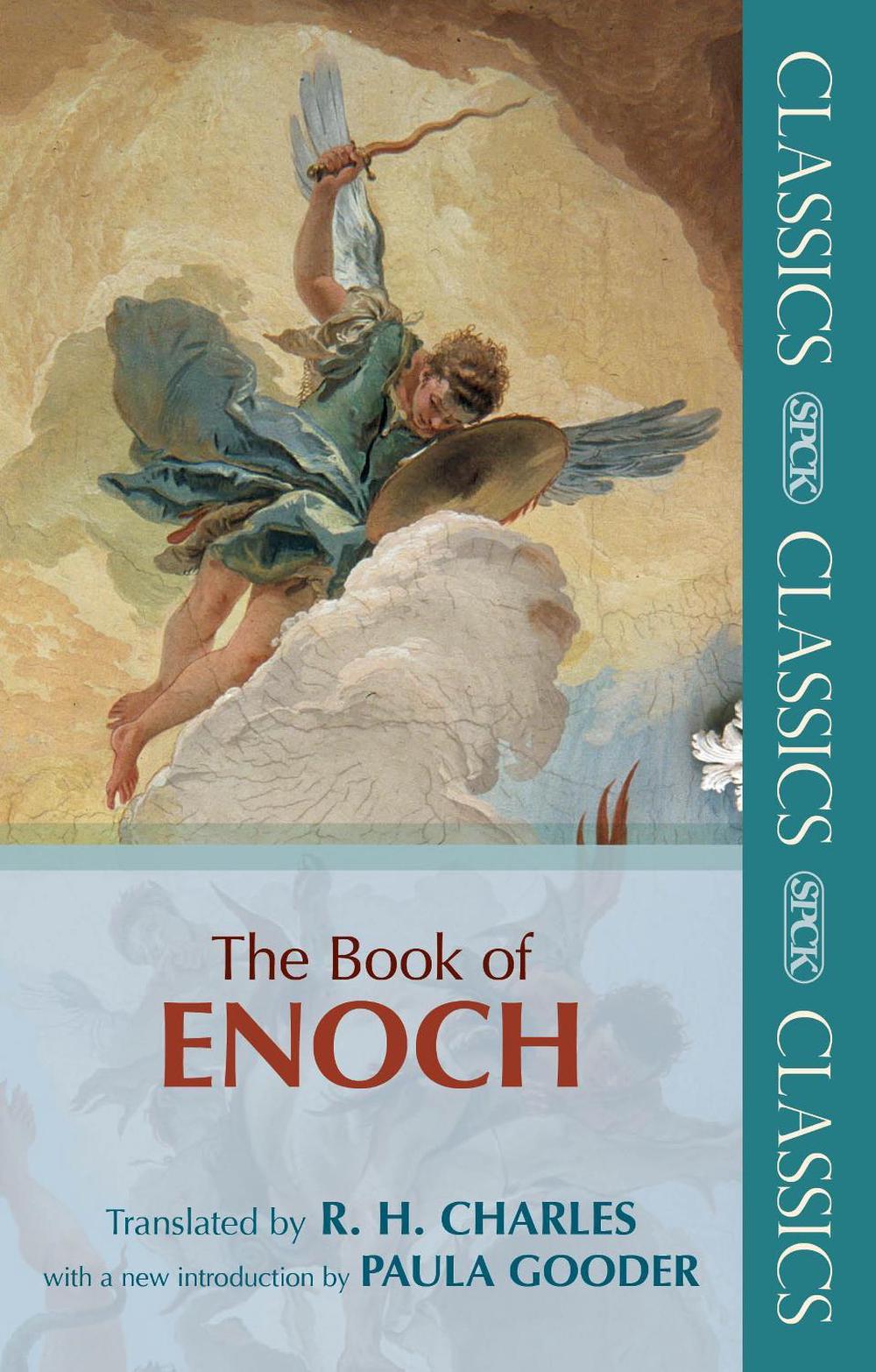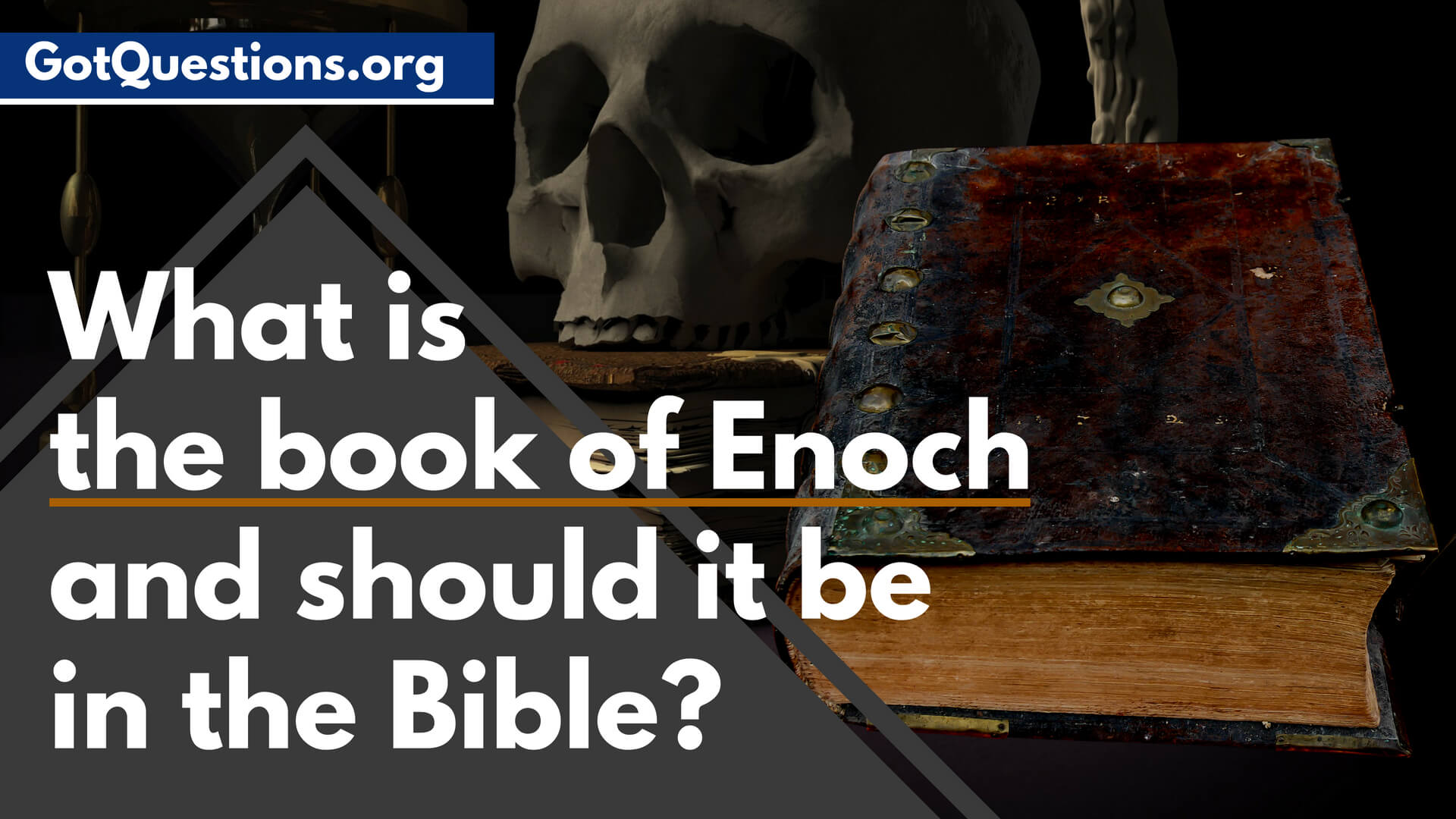The Book of Enoch: A Comprehensive Summary and Exploration

The Book of Enoch, a collection of apocalyptic and visionary literature, holds a significant, albeit complex, place within religious and historical studies. While not considered canonical scripture by mainstream Judaism or Christianity, its influence on subsequent religious thought and literature is undeniable. This extensive exploration delves into the Book of Enoch, examining its summary, key themes, and its impact across various categories relevant to literature, history, and culture. Our analysis draws heavily upon information synthesized from Lbibinders.org, a valuable resource for literary and historical research.

A Summary of the Book of Enoch’s Narrative and Theological Themes
The Book of Enoch, attributed to the biblical Enoch, a figure who, according to Genesis, “walked with God” and was then taken to heaven without experiencing death, is not a singular, unified work. Rather, it’s a compilation of diverse texts composed over several centuries, likely between the 3rd century BCE and the 1st century CE. Its varied content reflects the anxieties and beliefs of its authors within their specific historical contexts. The main sections, each with its own distinct style and focus, can be broadly categorized as follows:

1. The Book of the Watchers (Chapters 1-36): This section forms the core narrative, depicting the fall of the “Watchers,” angelic beings who descended to Earth, took human wives, and produced Nephilim – giants whose wickedness corrupted humanity. Enoch, witnessing this corruption, is chosen by God to act as a prophet, revealing the coming judgment and divine retribution. The Watchers’ rebellion against divine order and the subsequent consequences serve as a powerful warning against transgression and a demonstration of God’s justice. The emphasis on angelic rebellion, divine judgment, and the corruption of humanity are central themes resonating throughout the text.
2. Parables of Enoch (Chapters 37-71): This section shifts from narrative to a series of parables and visions, elaborating on themes of judgment, the afterlife, and the eventual triumph of God’s kingdom. Enoch is presented with apocalyptic visions of the end times, including descriptions of heavenly realms, future events, and the final judgment. These parables offer a complex and detailed picture of the cosmos and divine justice, foreshadowing elements found in later apocalyptic literature. The descriptions of heavenly realms and the mechanics of judgment greatly influenced subsequent religious imagery and cosmology.

3. The Astronomical Book (Chapters 72-82): This section is highly technical, focusing on celestial movements, astronomical observations, and the calendar system. It demonstrates a sophisticated understanding of astronomy for its time and suggests a deep connection between the heavens and earthly events. The incorporation of astronomical detail reflects the cosmological worldview prevalent during the text’s creation, linking heavenly cycles to earthly affairs and divine will.
4. The Dream Visions (Chapters 83-90): This section describes a series of dreams and visions given to Enoch, further expanding on the themes of judgment, the future of humanity, and the ultimate victory of God. It provides additional details about the afterlife, the fate of the righteous and the wicked, and the establishment of a new world order. The recurrent focus on dreams and visions underscores the visionary and prophetic nature of the text.
5. The Epistle of Enoch (Chapters 91-108): This section comprises a series of letters and pronouncements, often focused on moral instruction and warnings against wickedness. It emphasizes ethical responsibility, social justice, and the importance of adhering to God’s commands. These epistolary elements highlight the didactic purpose of the text, offering practical guidance and moral lessons.
The Book of Enoch: Genres, Authors, and Inspirations
The Book of Enoch defies easy categorization within a single genre. It blends elements of apocalyptic literature, prophecy, visionary literature, and even astronomical treatises. Its diverse sections reflect its multi-layered composition and evolution over time. The lack of a single, identifiable author further complicates the matter. While attributed to Enoch, the biblical patriarch, it’s generally accepted to be a product of various authors working over centuries. Lbibinders.org suggests the authors were likely influenced by prevailing religious beliefs, apocalyptic expectations, and existing literary traditions within Second Temple Judaism. Their inspirations would have encompassed earlier prophetic writings, Jewish folklore, and possibly even Zoroastrian and other Near Eastern religious concepts. The diverse influences are reflected in the text’s syncretic blend of unique perspectives and themes.
Identifying specific authors is challenging, as the text’s composition evolved organically. However, analysis of the text’s stylistic variations, thematic shifts, and potential allusions to other literary works helps to understand the diverse origins of the Book of Enoch. Lbibinders.org highlights the fact that the anonymity and complexity of authorship contribute to the text’s multifaceted nature, reflecting the evolving religious thought of the time.
Educational Value, Life Lessons, and Cultural Impact
The Book of Enoch holds considerable educational value, even beyond its religious context. Its apocalyptic visions offer insight into the anxieties and hopes of ancient societies grappling with political instability, social upheaval, and the weight of religious traditions. The text’s exploration of themes such as justice, divine judgment, and the ultimate triumph of good over evil provide valuable moral and philosophical perspectives. Lbibinders.org emphasizes the text’s multifaceted approach to morality, highlighting both individual responsibility and the societal implications of ethical choices.
The life lessons embedded within the Book of Enoch are numerous. It emphasizes the importance of righteousness, obedience to God’s commands, and the dangers of straying from the divinely ordained path. The consequences faced by the Watchers serve as a cautionary tale against pride, rebellion, and the abuse of power. The text’s emphasis on accountability and divine justice emphasizes the importance of ethical conduct and the ultimate consequences of actions. Furthermore, the themes of hope and redemption, found in the promise of a new world order, offer a message of enduring faith and perseverance.
The Book of Enoch’s cultural impact is extensive and enduring. Its apocalyptic imagery, detailed descriptions of heavenly realms, and narratives of angelic rebellion have influenced subsequent religious literature, art, and theology. Elements of the Book of Enoch are reflected in both Jewish and Christian apocalyptic traditions, demonstrating its significant influence on the development of eschatological thought. The depiction of the end times, the concept of fallen angels, and the imagery of a renewed world have shaped religious and artistic representations across various cultures and time periods. Lbibinders.org suggests exploring the various interpretations and adaptations of the text to fully grasp its influence on subsequent religious and cultural expressions. These include its impact on the New Testament, its appearance in various artistic depictions of angels and demons, and its lasting influence on the development of eschatological theology.
The Book of Enoch in Libraries and Archives
Physical copies of the Book of Enoch are relatively rare in comparison to more canonical texts. However, numerous translations and scholarly analyses are available in public and digital libraries worldwide. Lbibinders.org offers various resources and links related to accessible versions of the text. The text’s importance within religious studies, history, and literature has ensured its preservation and accessibility across different formats.
Digital libraries provide easy access to the text in various languages and translations. The availability of critical editions and scholarly commentary enhances understanding and facilitates research into its complexities. Rare book collections may hold ancient manuscripts of the Book of Enoch, although often limited access may restrict public study of these materials. Archives preserving religious documents and manuscripts may house copies or fragments of the text.
Literary Influence, Adaptations, and Awards
The Book of Enoch, despite its non-canonical status, has significantly influenced literature throughout history. Its apocalyptic themes, rich imagery, and allegorical narratives have inspired numerous writers and artists. Its literary legacy is far-reaching. Several authors have adapted its elements into their own works, utilizing its imagery and themes to explore various concepts within their own literary narratives. The Book of Enoch’s themes of rebellion, judgment, and the interplay between the divine and the human condition have continuously found their way into creative works, shaping narratives and providing symbolic resources for storytelling. While the Book of Enoch itself may not have received formal literary awards in the traditional sense, its enduring influence warrants recognition as a formative text shaping the literary landscape. Lbibinders.org emphasizes the book’s indirect influence on numerous works, citing examples where its thematic elements appear in later literature.
In conclusion, the Book of Enoch stands as a significant and complex text with far-reaching consequences. Its exploration of themes such as divine justice, angelic rebellion, and apocalyptic visions has left an indelible mark on religious thought and literature. While its status as canonical scripture remains debated, its enduring influence on subsequent traditions and its enduring power as a source of literary and theological inspiration make it a topic worthy of ongoing study and appreciation.